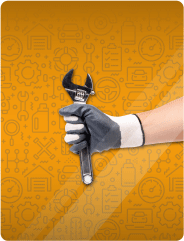CV Boots
What is a CV Boot?
A CV boot is a rubber like cover that fits over the CV joint of a drive shaft. These covers are sometimes called bellows as the are often corrugated in shape rather like the bellows of an accordion. They are designed to flex and move with the drive shaft however maintain a watertight seal around the CV joint.
Drive shafts generally have an inner (transmission side) and an outer (wheel side) joint which both need to be covered with a CV boot.
CV boots are made from different flexible materials such as:
Thermoplastic
Rubber
Silicone
Neoprene
What comes in a CV boot?
CV boots can come with different parts depending on the brand and if the part is described as a ‘CV boot’ or as a ‘CV boot kit’.
There are sometimes exceptions to this however nearly all CV boot kits come with clips and grease.
CV boots not listed as kits will often come with the items shown in the image only.
We are happy to let you know which brand provides the clips and grease with their CV boots if this is not clear on the listing.
How do I choose the correct CV boot?
The selection of CV boots for a vehicle is as varied is the number of drive shafts are for the same vehicle.
Some of the factors to consider when selecting the correct replacement CV boots are:
Number of gears (i.e. 5 speed or 6 speed etc)
If you need the inner or outer boot
The diameter of the large and small end of the boot
Manual or automatic transmission
If the vehicle has ABS
Transmission type / transmission code
Vehicle manufacture date (this is not the date the vehicle was registered but the date it was made
Engine number sequence (up to or after as specific number/letter
VIN (chassis number) sequence (up to or after as specific number/letter
What brand of CV boot should I choose?
The replacement costs of a CV boot is relatively small. Much of the expense is centred around the labour cost as fitting these parts can involve removing the drive shaft.
As with most replacement parts budget is a consideration. We would suggest a CV boot that has a long warranty and comes with the additional items that you need to fit them (clips and grease).
How can I tell my CV boot needs replacing?
When a CV boot has failed it is not always immediately obvious. These failures are often detected during an MOT which would lead to a test fail. The failure or split in the CV boot causes the protective grease to escape and water and dirt to replace it. Once the grease escapes it does not take long for the CV joint to fail.
Here are some ways you can tell your CV boot needs replacement:
Grease is sprayed on the inside of your wheel
Clicking sound when turning your vehicle in a circle
There is a split visible in the CV boot material
Vibrations as a result of a failing CV joint
 Proud to be a UK-based company
Proud to be a UK-based company Contact us
Contact us






